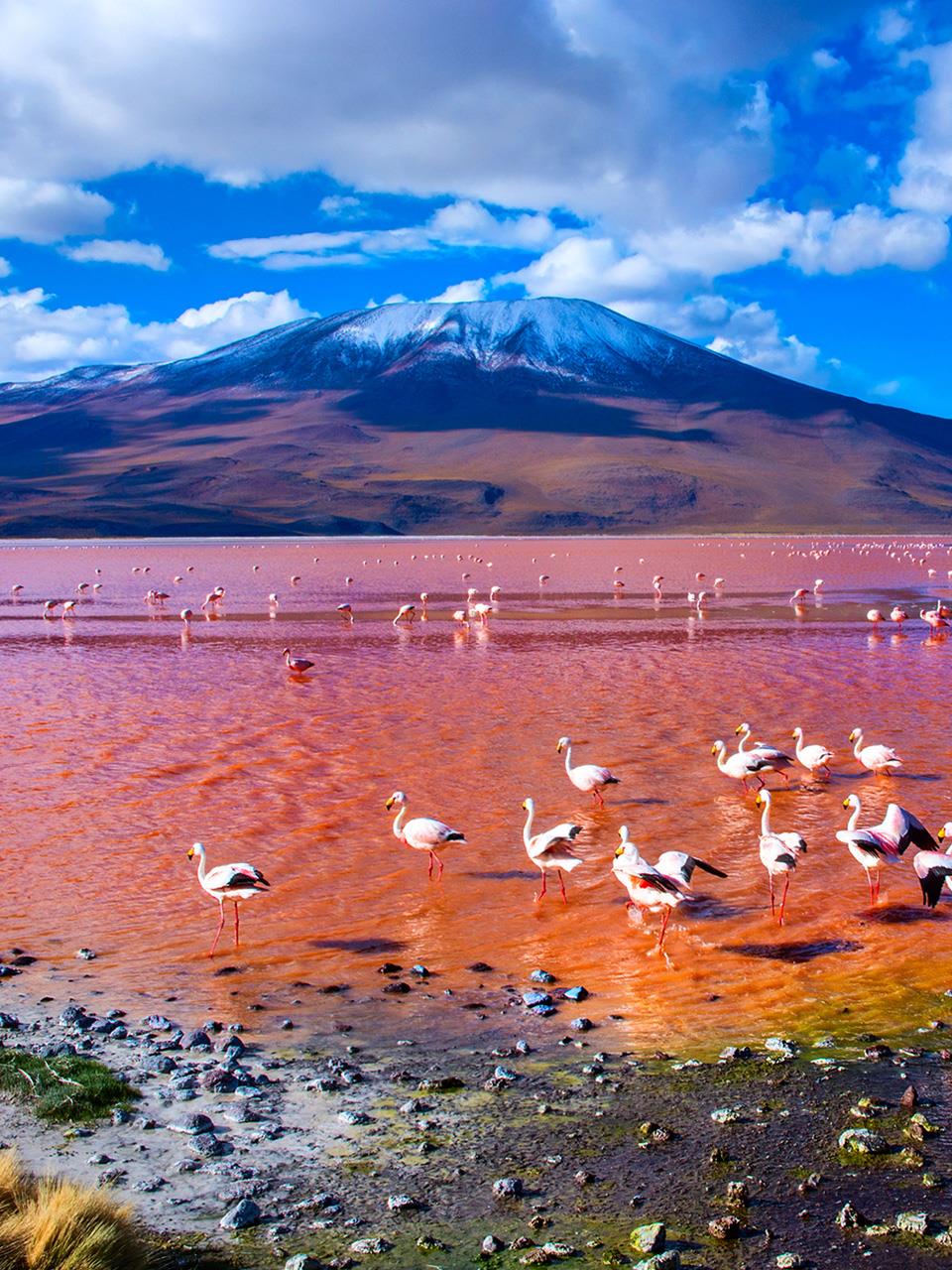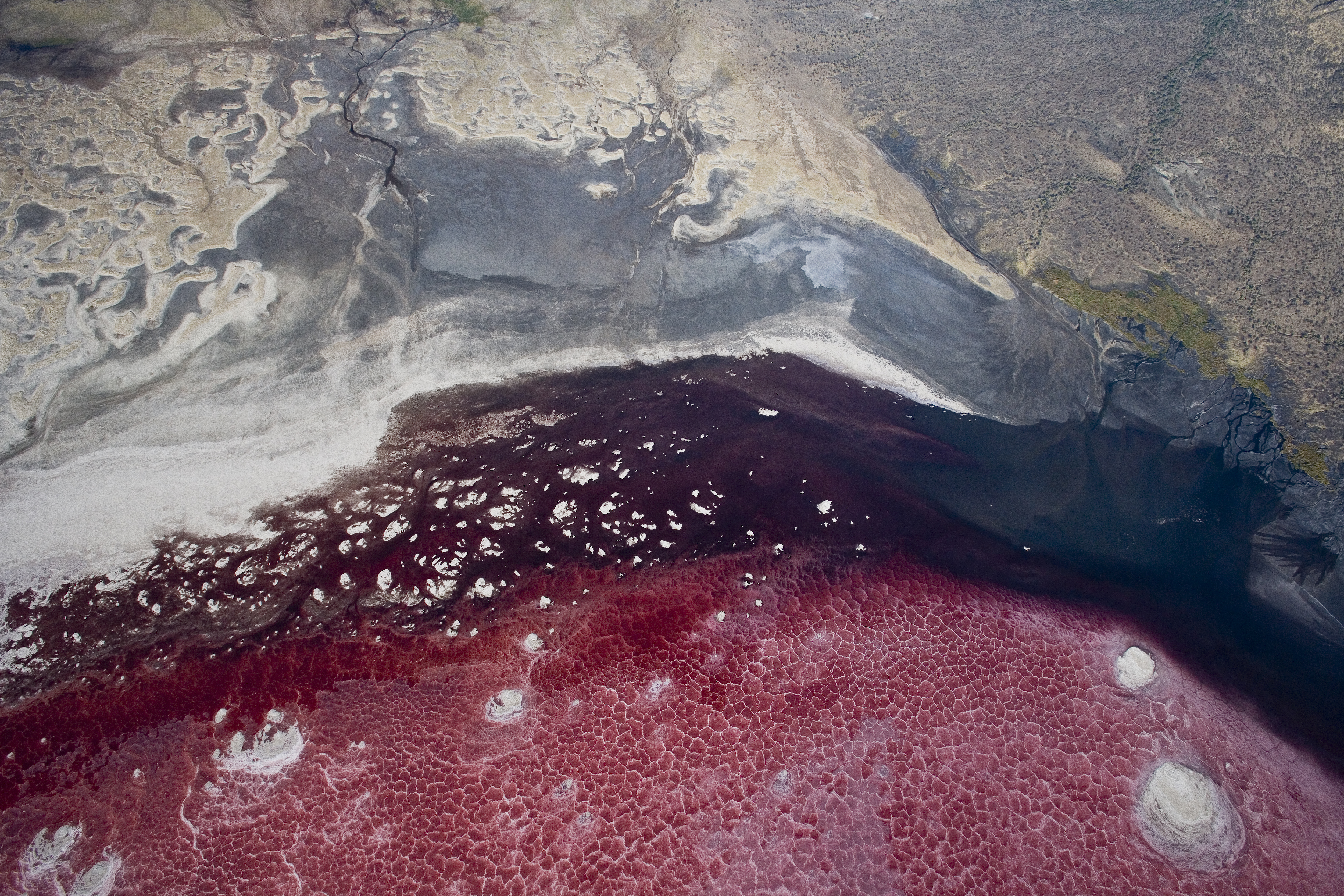


So, the lakeĪctually, derives its color from salt-loving microorganisms that thrive in its alkaline waters The red pigment in those cyanobacteria produces the deep red colors of the lake’s waters and the orange colors in the shallow areas. The lake has halophilic organisms including some cyanobacteria that, like plants, produce their own food through photosynthesis. The alkalinity of the lake can reach a pH level of more than 12.The lake type is Salt – It is 57 kilometers long and 22 kilometers wide.Lake Natron has the largest flamingo migration in the world.2,5 million flamingos are coming here yearly to breed.Special bacteria and blue algae thrive in this environment and form an ideal breeding ground for the life of birds The adaptation of a fish called tilapia alkaline who alone can survive in the alkaline waters of the lake, typically along its shores.

Lake Natron is a mineral-rich soda lake and flamingo breeding ground that lies at the foot of Ol Doinyo Lengai, an active volcano. This image, which was captured on 3 February 2019, is also featured on the Earth from Space video programme.Natron area is 1.040 km² – is in fact a very hot, arid, harsh, lunar, and fascinating territory, a layering of volcanic eruptions which colors range from ocher to white, green and black, a glittering expanse of anthracite color sand The mission’s frequent revisits over the same area and high spatial resolution allow changes in inland water bodies to be closely monitored.

This mineral is collected and used for glass manufacturing, fabric dyeing and paper production.Ĭopernicus Sentinel-2 is a two-satellite mission to supply the coverage and data delivery needed for Europe’s Copernicus programme. The mineral trona can also be found in the lake’s waters. The lake is over 30 km long and has a notably high salt content, and in some places the salt is up to 40 metres thick. The pink-coloured waters of Lake Magadi can also be seen at the top of the image. The extinct Gelai Volcano, standing at 2942 m tall, is visible southeast of the lake. In fact, the lake is home to the highest concentrations of lesser and greater flamingos in East Africa, where they feed on spirulina – a green algae with red pigments. The saline waters make the lake inhospitable for many plants and animals, yet the surrounding salt water marshes are a surprising habitat for flamingos. Despite its dark colour in this image, Lake Natron is often bright red owing to the presence of microorganisms that feed on the salts of the water. Lake Natron is around 60 km long and is fed mainly by the Ewaso Ng'iro River. The Copernicus Sentinel-2 mission takes us over two saline lakes in East Africa: the larger Lake Natron in northern Tanzania and the smaller Lake Magadi, just over the border in Kenya.


 0 kommentar(er)
0 kommentar(er)
